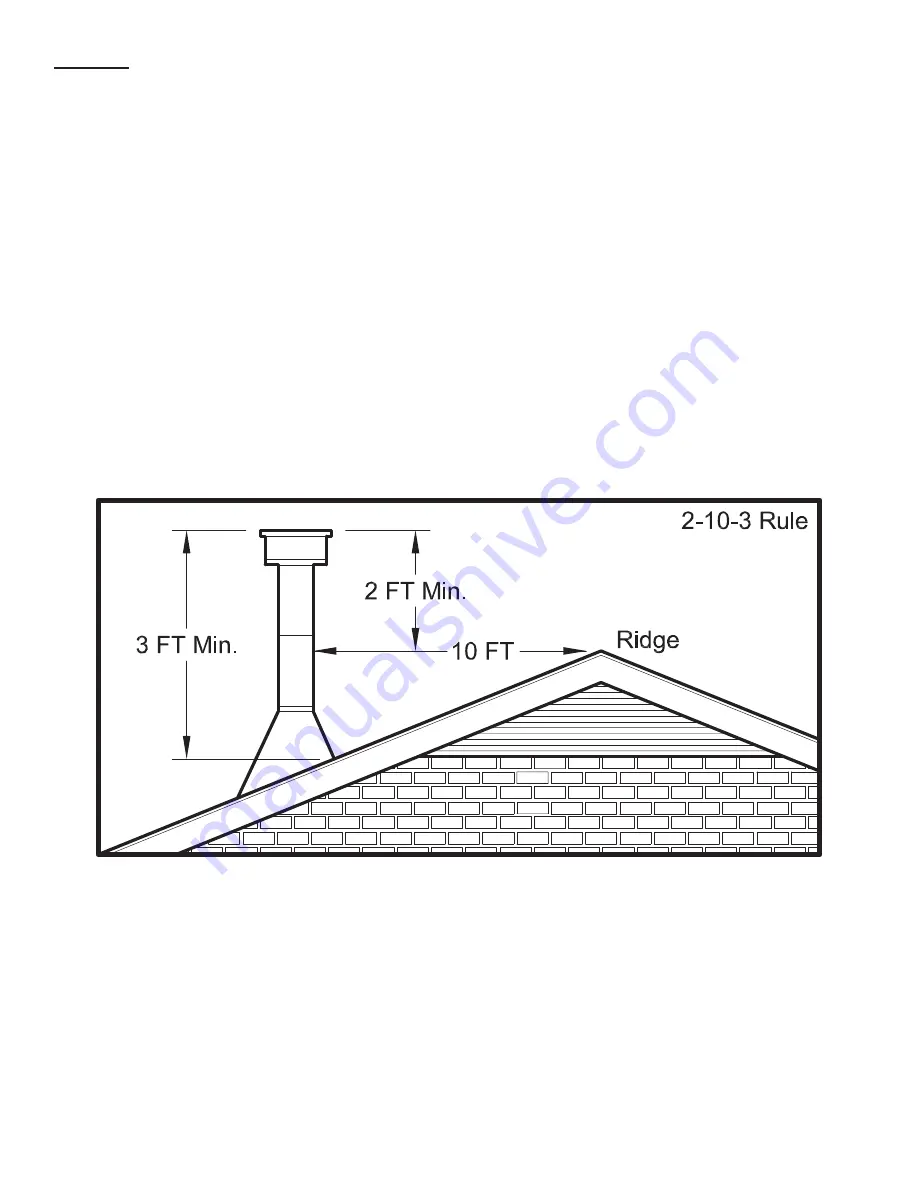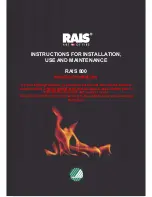
-
8
-
CHIMNEY
Your appliance may be hooked up with a 6” factory built or masonry chimney. If you are using a factory built
chimney, it must comply with UL 103 or CAN/ULC-S629 standard; therefore it must be a Type HT (2100°F). It is
extremely important that it be installed according to the manufacturer’s specifications. If you are using a masonry
chimney, it is important that it be built in compliance with the specifications of the National Building Code. It
must be lined with fire clay bricks, metal or clay tiles sealed together with fire cement. (Round flues are the most
efficient). The interior diameter of the chimney flue must not be smaller than the exhaust outlet of the appliance.
A flue which is too small may cause draft problems, while a large flue favours rapid cooling of the gas, and hence
the build-up of creosote and the risk of chimney fires. Note that it is the chimney and not the stove which creates
the draft effect; your stove’s performance is directly dependent on an adequate draft from your chimney.
The following recommendations may be useful for the installation of your chimney:
1. Do not connect this unit to a chimney flue serving another appliance.
2. It must rise above the roof at least 3’ (0.9m) from the uppermost point of contact.
3. The chimney must exceed any part of the building or other obstruction within a 10’ (3.04m) distance by a
height of 2’ (0.6m).
4. Installation of an interior chimney is always preferable to an exterior chimney. Indeed, the interior chimney
will, by definition, be hotter than an exterior chimney, being heated up by the ambient air in the house.
Therefore the gas which circulates will cool more slowly, thus reducing the build-up of creosote and the risk
of chimney fires.
5. The draft caused by the tendency for hot air to rise will be increased with an interior chimney.
6. Using a fire screen at the extremity of the chimney requires regular inspection in order to ensure that it is not
obstructed thus blocking the draft, and it should be cleaned when used regularly.
7. All joints must be sealed inside and out.
8. The exterior section of the chimney should be double or triple wall.
Summary of Contents for GW7400
Page 21: ...21 Notes...









































